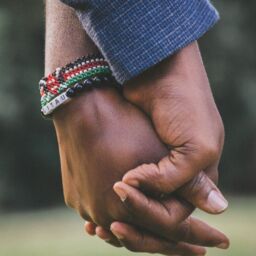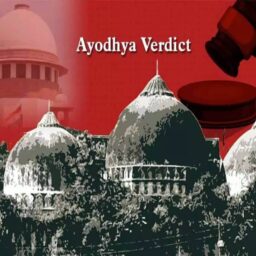
INTRODUCTION
Law can simply be defined as a set of rules promulgated by a sovereign authority, which people are expected to obey. Culture can be described as the way of life of a people, including their attitudes, perceptions, habits, arts, sciences, values, and belief systems.[1] A society is held together by invisible bonds of common thought or agreement on what is right or wrong. Thus, the consensus reached at or the common thought that society acquiesces to bind itself in, in turn, legitimizes the society’s control through law.[2] However, at the intersection of law and culture, complexities that give rise to conflicts are galore, particularly in multi-cultural societies and democracies.
In modern societies, the resolution of conflicts cannot be done without the involvement of law. The question is how much interference should the law be allowed to make in cultural or religious realms? Should law remain a mute spectator or play an active role in the cultural dialogue by using coercive force or be a neutral umpire? Interestingly, if the law itself is in a tug-o-war with culture, then what should be the role of law? One set of jurists believe that if law recuses itself entirely, then it will be guilty of connivance in the cultural conflicts and not fulfill its purpose. Others believe the law to be the best instrument in bringing about a change in the antiquated cultural practices. Some jurists and authors acknowledge the limitations of law as a medium to achieve social change without cultural support.
HOW CULTURE OVERPOWERED LAW AND ACCORDINGLY FACILITATED A CHANGE IN LAW
The evolution of family structures and concepts has subverted and eventually altered law. The societal acceptance of homosexual and live-in relationships, nuclear families, single-parent families are all examples of cultures subverting the age-old laws that were prevalent. The decriminalization of section 377 of the IPC and legitimizing consenting homosexual relationships via the judgement of Navtej Singh Johar vs. U.O.I[3], the legitimisation of live-in relationships by the Supreme Court by recognising them as “relationships in nature of marriage” in several landmark cases like Indra Sarma vs. V.K.V.Sarma[4] are few instances of culture overpowering law and pushing legislature to amend the laws accordingly.[5]
CULTURE IN CONFLICT WITH THE LAW
On the other hand, there are several instances where culture has been in conflict with the law. The culture of polygamy is so strong that law alone has not been able to change it. Polygamous marriages are still not illegal under the Muslim personal law while they became illegal under the Hindu Marriage Act for the Hindus and under section 494 of the IPC polygamous marriage has been made void. However, despite the law certain Hindu communities of Tamil Nadu and Andhra Pradesh allow men to have two wives. Similarly, under Goa Family Law, 1880 Hindu man is allowed to have a second wife if the first fails to produce children; this law has not yet been repealed.[6]
The Kodavas are a tribal community in Karnataka’s Coorg, who carry and worship arms as a part of their culture. They are the only community in India that have an exemption from obtaining arms license for firearms like pistols, revolvers, and double-barrelled shotguns. The practice of firing four shots to inform about any birth and two shots for death in the family has been prevalent since the olden days when there weren’t any phones or wireless technology to communicate easily. The exemption has been granted vide the Rules issued under the Arms Act to honour the age-old religious and cultural feelings of the community.[7] However, the aforesaid exemption was questioned because it promotes disharmony and is unconstitutional being based on irrational and discriminatory grounds like race.[8] But, the Kodavas united fiercely against the criticism to retain the exemption by claiming it as their cultural birthright. They also retorted at the question of their privileges being unconstitutional by pleading that minority communities have been given constitutional protection to practice their cultures at liberty. This dispute is one amongst the many other disputes revolving around the legal and cultural conflicts concerning the modern Indian legal system.[9]
HOW LAW INTERFERES OR UNDERMINES CULTURE
Sometimes, the law is used as an instrument of State power to deracinate or undermine culture. For instance, a racist conspiracy theory like ‘love jihad/Romeo jihad’ has been given credence after the state government of UP promulgated an Ordinance namely, ‘The Uttar Pradesh Prohibition of Unlawful Conversion of Religion Ordinance, 2020’. This made people raise their voices and protest against such laws that seek to destroy multi-culturalism. The Supreme Court in Shafin Jahan v. Ashok K.M.(famously known as the Hadiya case)[10] decided that an adult has a right to marry the person of their choice under Article 21 of the Constitution and it was unnecessary for the HC of Kerala to consider the aspects of social radicalization in the case.
HOW LAW SHAPES CULTURE
The foremost need of any legislation is for the betterment of society and law can do that by altering or revoking outdated cultural norms according to the needs of contemporary society. This can be exemplified by quoting revolutionary moments in Indian history when ‘Sati Pratha’ (the cultural practice of self-immolation of a man’s widow on his pyre) was abolished by the Bengal Sati Regulation, 1829; and when The Hindu Widows’ Remarriage Act, 1956 was passed which allowed widows’ remarriage (who were socially and culturally forced to lead a miserable an austere life after the death of their husbands). Likewise, The Hindu Succession Act, 1956 was amended in the year 2005 to include women as coparceners in the joint Hindu family from their birth, on equal footing with males. This amendment brought about a change in the customary ‘Mitakshara’ coparcenary law that discriminated against women on the ground of gender. Declaring the of practice ‘Triple Talaq’ by The Muslim Women (Protection of Rights on Marriage) Act, 2019 as unconstitutional as it discriminated against women by violating Articles 14 and 15 of the Constitution. These are a few instances where the law has effected positive changes in cultural practices. However, there are still certain cases where culture continues to wrangle with law:-
The cultural bull-taming sport named ‘Jallikattu’ which is widely celebrated in Tamil Nadu was banned by the verdict of Hon’ble Apex court of India in 2014, in the case of Animal Welfare Board of India vs A. Nagaraja & Ors[11], citing cruelty to animals as the reason. However, soon after, there were raging protests from Tamil people, who felt their cultural rights undermined because of the ban. To mollify the sentiments, the government of Tamil Nadu amended ‘The Prevention of Cruelty to Animals Act, 1960’ and circumvented the ban thus permitted the sport to be continued without any legal penalty. But, in 2017, the cultural practice was challenged again before a Constitution Bench to decide whether Jallikattu can be given protection under Article 29 (1) of the Indian Constitution that protects the cultural and educational interests of the minorities.[12] The petition is still pending before the court. Issue of the continuance of this tradition of Jallikattu has been a long drawn tussle for over ten years now and, despite the judicial dictum and law against animal cruelty, it has not been settled. This brings to light the fact that everything cannot be black and white while dealing with cultural and legal conflicts and culture does not bow down to law that easily.
The State of Kerala has been enmeshed in a similar emotive issue of law and cultural conflict after the Hon’ble Supreme Court of India lifted the ban on the entry of women in the Sabarimala temple. The judgement in Indian Young Lawyers Association v. the State of Kerala[13] has turned out to be a watershed moment in Indian legal history. The deep-rooted cultural belief of menstruating women being impure and therefore banned from entering sacred shrines or temples was brought to an end by this verdict. As per the judgement, it was observed that “Constitutional morality supersedes any custom or tradition”. However, a review petition is pending before a Constitution bench.
CONCLUSION
It is concluded that there should be a harmonious construction between law and cultural beliefs to help society evolve in a neoteric way. Yet, there are certain grey areas where continuous negotiations of law with culture do not lead to satisfactory solutions. To take an example, implementation of a Uniform Civil Code that seeks to group personal laws under a single code seems to be tedious in a cultural and religious melting pot like India. Therefore, the legislators in multicultural societies must keep in mind that a balance must be struck and equal reverence for different cultures must be manifested in the enactment of laws so that a particular set of cultural values do not become hegemonic.
Author(s) Name: Molly Tarunima Tagore (Graduate, RGNUL, Patiala)
[1] https://www.oxfordreference.com/view/10.1093/oi/authority.20110901080526139
[2] Robert Post, Law and Cultural Conflict, 78 CHI.-KENT L. REV. 485,494 (2003).
[3] W. P. (Crl.) No. 76 of 2016; D. No. 14961/2016.
[4] Crl. App. No. 2009 of 2013.
[5] Nancy E. Dowd, Law, Culture, and Family: The Transformative Power of Culture and the Limits of Law, 78 Chi.-Kent L. Rev.785 (2003).
[6] https://scroll.in/article/873558/a-polygamy-ban-would-be-good-but-implementing-existing-laws-would-be-even-better-say-legal-experts
[7] https://economictimes.indiatimes.com/news/politics-and-nation/government-continues-british-era-exemption-given-to-kodavas-of-coorg-for-arms-licence/articleshow/71824033.cms?from=mdr
[8] https://starofmysore.com/arms-act-exemption-to-kodavas-stakeholders-urged-to-present-facts-before-court-government/
[9] https://thebastion.co.in/debate/a-farewell-to-arms-the-legal-battle-over-kodagus-gun-culture/
[10] Crl.A 366/2018 (arising out of SLP (Crl.) 5777/2017).
[11] (2014) 7 SCC 547.
[12] https://www.thehindu.com/news/national/sc-refers-jallikattu-challenge-to-constitution-bench/article22630214.ece
[13]WRIT PETITION (CIVIL) NO. 373 OF 2006.
















